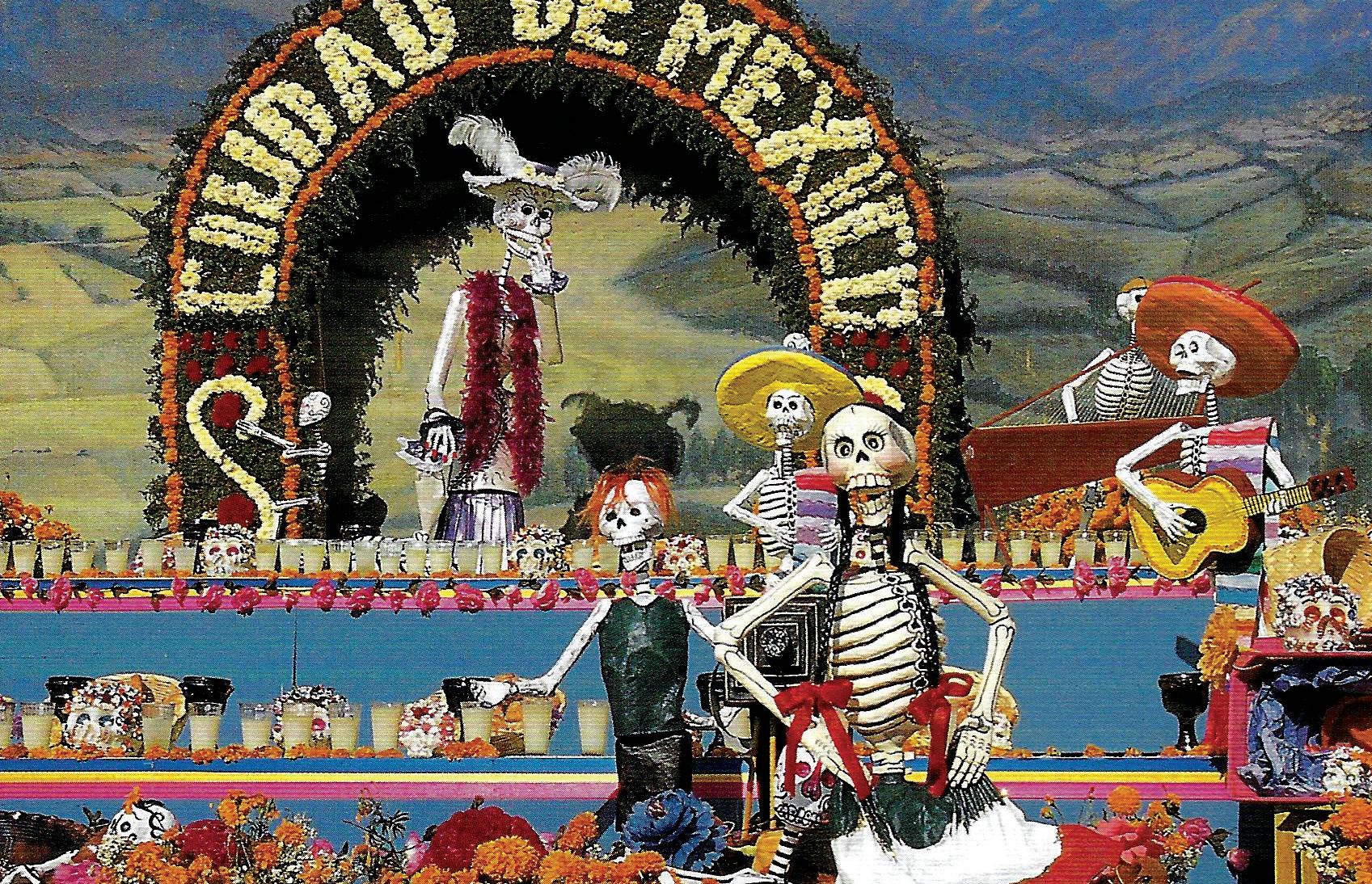
5 minute read
Glossary of Terms
Alebrije – Brightly colored Mexican art sculpture of fantastical (fantasy/mythical) creatures.
Amatl – The Nahua word for paper.
Advertisement
Aztec –A Mesoamerican culture that flourished in central Mexico in the post-classic period from 1300 to 1521.
Calavera – A representation of a human skull.
Calavera Catrina – A popular etching by Mexcian printmaker Jose Guadalupe Posada. Created in 1910, her image is now a festive symbol of Dia de los Muertos. Posada’s Catrina was a spoof on the Mexican elite who would imitate European lifestyles.
Camazotz – The Mayan Bat God, or “death bat”.
Cempasúchitl –The name given to Mexican marigold flowers (Tagetes erecta). The word “cempasuchitl” comes from the Nahuatl (the language of the Aztecs) word zempoalxochitl which means twenty-flower: zempoal, meaning “twenty” and xochitl, “flower.”
Cenote – A natural pit, or sinkhole of water. The Mesoamericans believed cenotes were portals to the underworld and were sacred places used for rituals and sacrificial offerings.
Chicano Movement of the 1960s – Also called the Chicano civil rights movement or El Movimiento, was a Chicano or Mexican American grassroots movement that wanted equal rights in education and employment.
Coatlicue –An Aztec Goddess of Life, Death, and Rebirth whose name means “Serpent Skirt”.
Codex Borgia or Codex Yoalli Ehecatl– A Mesoamerican ritual and divinatory manuscript.
Copal – Copal incense is used in ceremonies. The word comes from the Nahuatl language word Copalli, meaning incense.
“Día de los Angelitos” – (Day of the Little Angels), November 1st, this day is dedicated to the souls of deceased children.
Día de los Muertos (Day of the Dead) – A celebratory feast day with a historically rich tradition that integrates both preColumbian and Catholic customs.
Deity – A supernatural being considered divine or sacred. The Oxford Dictionary of English defines deity as “a god or goddess (in a polytheistic religion),” or anything revered as divine.
Huitzilopochtli – Name meaning “Blue Hummingbird on the Left,” was the Aztec god of the sun and war.
Indigenous –The people who are originally native to a certain place. For example, the Aztecs are indigenous to Mexico.
José Guadalupe Posada – A Mexican political printmaker who used relief printing to produce popular illustrations. His work has influenced numerous Latin American artists and cartoonists because of its satirical humor and social engagement.
K’iche’ –Mayan people indigenous to the northwestern Highlands of Guatemala. The K’iche’ language is a Mesoamerican language in the Mayan language family and written records of K’iche’ history and mythology are preserved in the Popol Vuh.
Linocut – A printmaking technique, a variant of woodcut in which a sheet of linoleum is used for a relief surface.
Maya Civilization – A Mesoamerican civilization developed by the Maya peoples, and noted for its logosyllabic script— the most sophisticated and highly developed writing system in pre-Columbian Americas—as well as for its art, architecture, mathematics, calendar, and astronomical system.
Mesoamerica –Refers to both the many cultures, and a vast region that existed in North, Central, and Northern Costa Rica long before the Spanish arrived.
Mestizaje – A term that refers to the blending of Indigenous and European cultures and traditions.
Mexica or Mexicas – A Nahuatl-speaking indigenous people of the Valley of Mexico who were the rulers of the Aztec Empire.
Miccailhuitontli – The “Feast of the Deceased Young.”
Mictlan –The underworld in Aztec mythology. It was said that most people who died would travel to Mictlan, the lowest level of the underworld in an arduous four year journey through nine distinct levels.
Mole – A traditional sauce originally used in Mexican cuisine, as well as for dishes based on these sauces.
Nahuatl – A member of a group of people native to southern Mexico and Central America, including the Aztecs.
Ofrenda – An essential part of the Day of the Dead celebrations. The word ofrenda means offering in Spanish. It are also called altares or altars, but it is are not for worship. Olmec – A member of a prehistoric people inhabiting the coast of Veracruz and western Tabasco on the Gulf of Mexico ( c. 1200–400 BC), who established what was probably the first Mesoamerican civilization.
Pan de Muerto –Also called pan de los muertos in Mexico, is a type of pan dulce traditionally baked in Mexico during the weeks leading up to the Día de los Muertos, which is celebrated from October 31st to November 2nd.
Papel picado – Decoratively cut paper for festivities in Mexico.
Popol Vuh – A text recounting the mythology and history of the Kiche people, one of the Maya peoples, who inhabit the Guatemalan Highlands northwest of present-day Guatemala City.
Pre-Columbian – Relates to the history and culture of the Americas before the arrival of Christopher Columbus in 1492.
Syncretism – The amalgamation or attempted amalgamation of different religions, cultures, or schools of thought.
Tlaloc- The Aztec god of rain and thunder, Tlaloc brought earthly fertility, water, and delivered life and sustenance.
Tajin- A pre-Columbian archeological site in southern Mexico, it is one of the largest and most important cities of the Classic era of Mesoamerica.
Tenochtitlan – Also known as Mexica-Tenochtitlan, was a large Mexica city-state in what is now the center of Mexico City. The exact date of the founding of the city is unclear, but the most commonly accepted date is March 13, 1325.
Toltec – A member of an indigenous people that flourished in Mexico before the Aztecs.
Tzompantli – Or skull rack is a type of wooden rack or palisade documented in several Mesoamerican civilizations, which was used for the public display of human skulls, typically those of war captives or other sacrificial victims.
Tzotzil –Mayan people indigenous to the central Chiapas Highlands in southern Mexico.
Veneration – Is the act of honoring a saint, a person who has been identified as having a high degree of sanctity or holiness.
Xipe Totec – A Toltec and Aztec deity also known as “Our Lord the Flayed One”. Xipe Totec was considered the God of agriculture, spring, vegetation, and the inventor of war. Xipe Totec was also associated with death and represented as the Aztec Bat God.
Yax Che –The “Green Tree” or “First Tree.”









